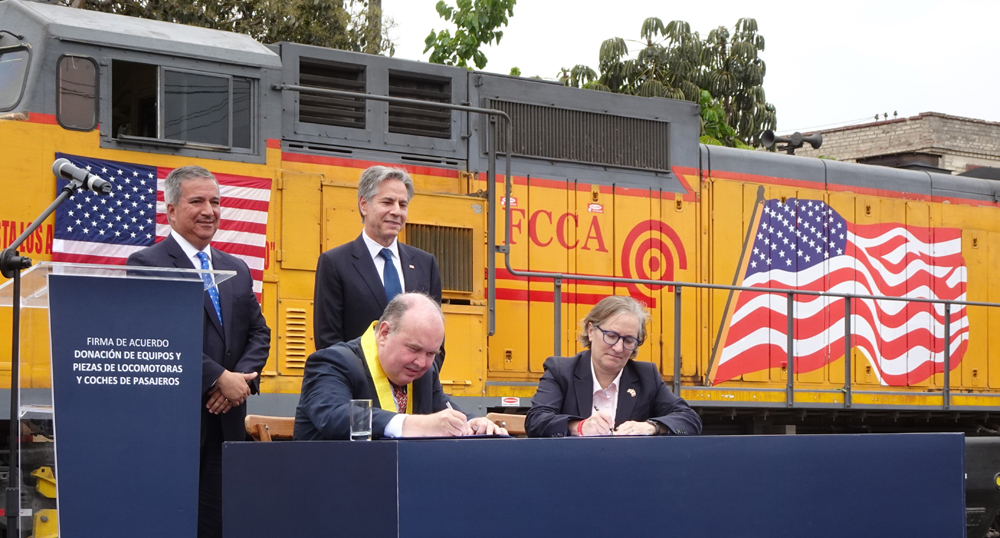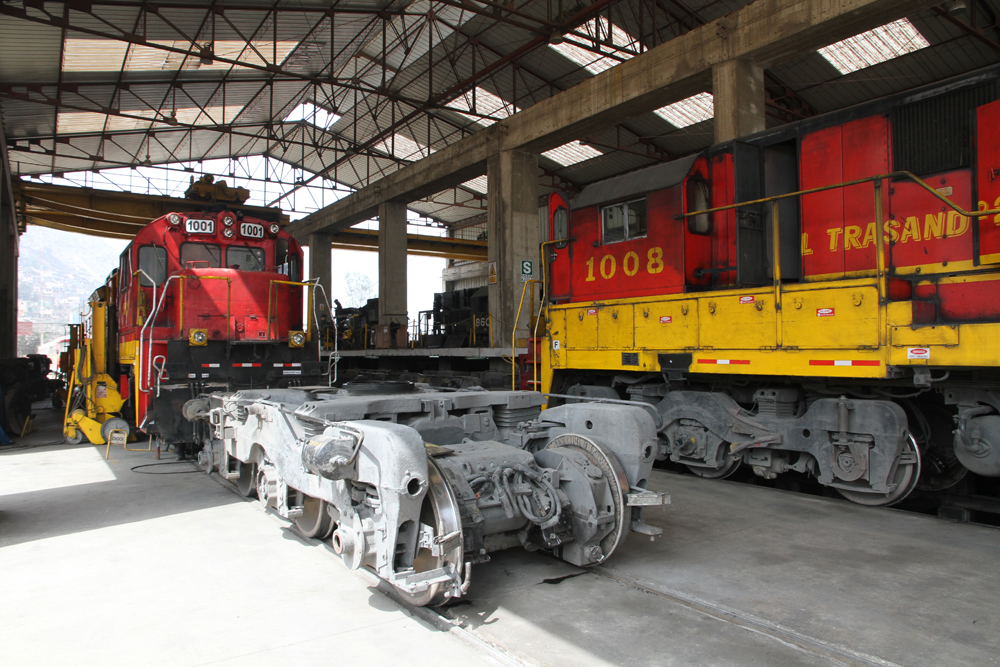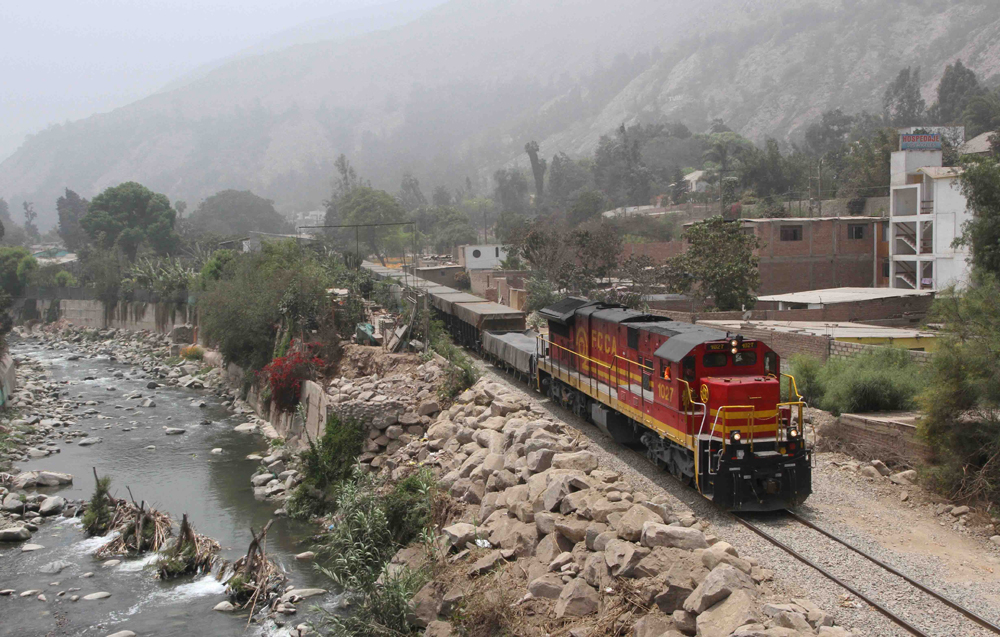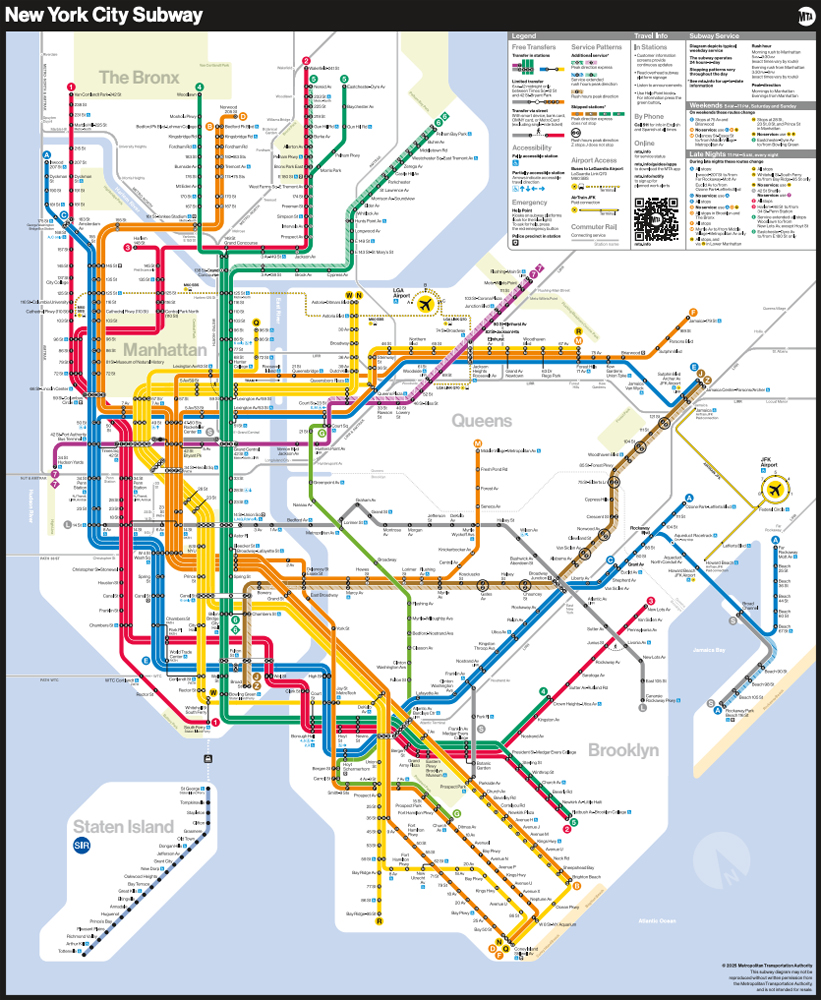
LIMA, Peru — A signing ceremony has transferred 19 F40PH-2 locomotives and 90 bilevel gallery cars from Caltrain to the transit authority in Lima, setting the stage for the launch of a new commuter rail operation serving Peru’s capital.
The ceremony on Saturday, Nov. 16, was held at Monserrate rail station. It brought together U.S. Secretary of State Antony Blinken; Michelle Bouchard, executive director of Caltrain; Dr. Raul Perez-Reyes, the Peruvian minister for transportation; and Lima municipal Mayor Rafael López Aliaga, along with Juan de Dios Olaechea, executive president of railroad Ferrocarril Central Andino (FCCA). Pittsburgh-based Railroad Development Corporation (RDC) is a shareholder in FCCA; RDC Chairman Henry Posner was also present.
Caltrain and the municipality of Lima, with significant support from the U.S. State Department, previously reached an agreement for Lima to receive the Caltrain equipment made surplus by electrification of the San Francisco-San Jose line and introduction of Stadler-built EMUs to replace most diesel trains [see “Caltrain equipment is bound for Peru,” Trains News Wire, Nov. 16, 2024].
The ex-Caltrain trains will be used on the FCCA-operated route between Lima and Chosica, around 25 miles east of the city center. FCCA and RDC have released some information about how the new operation will be set up
After arrival in Peru later in 2024, the former Caltrain locomotives and fleet will be refurbished at FCCA’s Chosica Shops, manned by over 200 skilled employees with strong expertise in rolling stock maintenance and overhauls. FCCA has previously rebuilt locomotives acquired secondhand from U.S. Class I railroads at the shops for its own use.

FCCA will serve as the host railroad for the operation between Desamparados station in central Lima and Chosica; the line climbs from sea level in Lima to 2.821 feet in Chosica. The actual commuter-train operator has yet to be selected by the Peruvian agencies leading the project. The Municipality of Lima is targeting a start later in 2025 for the first segment of the service.
The project aims to reduce Lima residents’ commute times from hours to minutes. Due to the high population density along the corridor (the Lima area has a population of about 11.5 million population) and substantial traffic congestion — by car, it can take well over 2 hours to travel between Chosica and Central Lima — projected ridership for the rail service, once fully in operation, is estimated 200,000 weekday riders per day. Lima’s mayor, speaking at the signing ceremony, also suggested the service could be extended to the Callao district west of the city center.
FCCA says it will be cooperating with the city of Lima and the Peruvian Transportation Ministry to upgrade the 25-mile line for joint passenger/freight service with double track, high-speed crossovers, CTC, positive train control, grade separations, and other support facilities, and by building 14 passenger stations. A U.S. government briefing on U.S./Peru relations issued just before the signing event highlighted that the construction work planned is likely to generate up to $500 million for U.S. companies in exports of rail, track material, signaling systems, and protection equipment for crossings.

Private concessionaire FCCA has been operating and maintaining the world’s second highest railway line in Peru, which includes the Lima to Chosica line, since September 1999. The line starts at sea level beside the Pacific Ocean at Callao, the port for Lima, and climbs in 173 kilometers/108 miles to 4,783 meters/15,692 feet in the Andes mountains. The 222-km/138.75-mile line, built in stages between 1851 and 1893 between Callao and the mining center of La Oroya, was funded largely by American and later British investors. It was for many years the world’s highest, but that accolade has been held by the Chinese Railways Qinghai–Tibet line to Lhasa in Tibet since it opened in 2006. The FCCA line was later extended another 124 km/77.5 miles to Huancayo, located in the high-altitude Mantaro Valley between the eastern part of the Andes in 1910. A 131km/82 mile high-altitude branch line from La Oroya to Cerro de Pasco line is in regular use for freight.
For most of its life the line has been operated by private concessionaires. Nationalization occurred in 1972, when Empresa Nacional de Ferrocarriles del Perú (ENAFER) took over, but was followed by only 27 years of state-controlled operation. A privatization process that began in the mid-1990s was concluded in 1999 when FCCA took over management and operation of the line; most freight is mineral ore (zinc, copper, lead) from mines in the Andes, exported from Peru via the port of Callao.













Biden and Blinken gifting 40 year old beat up equipment that us near end of service life to run on a line presently single track that needs massive upgrades. Some gift!
Meanwhile during the same week, Chinese President Xi Jinping and Peruvian counterpart Dina Boluarte inaugurated a $1.3 billion port that could transform South American trade with Asia just as Beijing prepares for a potential trade war with the US.
A rather sorry contrast.
Does the article mention how much Caltrain received for these cars and locomotives? They were at least partially paid for by the US taxpayers when they were originally purchased so if we aren’t going to take advantage of surplus equipment ourselves, I would certainly hope we received a good price for them.
The first Peru RR article 3 days ago mentioned $6M,USD, not including shipping costs. It’s always good to see some presence of standard gauge in South America.
https://www.trains.com/trn/news-reviews/news-wire/caltrain-equipment-is-bound-for-peru/